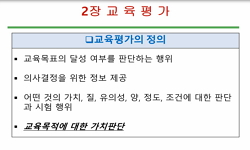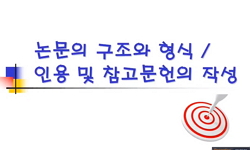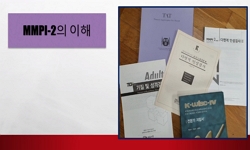Objective : This study aimed to create a translation, and adaptation of Miller Assessment for Preschoolers (MAP) for Korean children, which was then tested for validity and reliability. Method : The translation and content validation process invol...
http://chineseinput.net/에서 pinyin(병음)방식으로 중국어를 변환할 수 있습니다.
변환된 중국어를 복사하여 사용하시면 됩니다.
- 中文 을 입력하시려면 zhongwen을 입력하시고 space를누르시면됩니다.
- 北京 을 입력하시려면 beijing을 입력하시고 space를 누르시면 됩니다.
Examining Validity and Reliability of the Korean Miller Assessment for Preschoolers (K-MAP) = 한국어판 Miller Assessment for Preschoolers (MAP)의 타당도 및 신뢰도 연구
한글로보기https://www.riss.kr/link?id=T13544975
- 저자
-
발행사항
김해: 인제대학교 일반대학원, 2014
-
학위논문사항
학위논문(박사) -- 인제대학교 일반대학원 , 재활과학과 작업치료 전공 , 2014.08
-
발행연도
2014
-
작성언어
영어
- 주제어
-
DDC
615.8515 판사항(20)
-
발행국(도시)
경상남도
-
형태사항
xi, 125 p.: 삽화; 26 cm.
-
일반주기명
지도교수: 김경미
참고문헌: p. 75-87 - 소장기관
-
0
상세조회 -
0
다운로드
부가정보
다국어 초록 (Multilingual Abstract)
Objective : This study aimed to create a translation, and adaptation of Miller Assessment for Preschoolers (MAP) for Korean children, which was then tested for validity and reliability.
Method : The translation and content validation process involved direct and backward translation; a test of equivalence between the two versions (the original MAP and the Korean version of the MAP: the K-MAP); modification of an item (articulation); and the collection of content-related evidence from expert panels and clinician panels. Construct and concurrent validation were gained by conducting the K-MAP and a questionnaire (a Short Sensory Profile: SSP, and the Korean version of the Denver Developmental Screening Test-Ⅱ: K-DDST-Ⅱ) with a total of 140 normal children from Korea (from 4 years 9 months to 5 years 8 months old). Internal consistency was gained by analyzing the data of 140 K-MAPs. The inter-rater reliability was gained by analyzing videos of 30 normal children who conducted the K-MAP. The reliability of the test-retest was analyzed with the data of 22 normal children. The raw data and transition scores (red, yellow, green) were used for data analysis with Excel and SPSS (version 20.0). A content validity indices (CVI), means, and standard deviations were used for the analysis of the content validity. A factor analysis (direct oblimin) was used for the construct validity. A split-half method was used for the internal consistency. Spearman's rank correlations were used for the concurrent validity, inter-rater reliability and test-retest reliability.
Results : The results of this study are as follows.
1. The results of the comparison between the original MAP and the K-MAP with the expert panels were 3.66 ± 0.40, I-CVI 0.94, and S-CVI 0.83. The results of the understanding test were 3.66 ± 0.27, I-CVI 0.93, and S-CVI 0.58.
2. The construct validity of the K-MAP reflected that the foundations and coordination indices were unidimensional and homogeneous. However, the verbal and complex tasks had a less clear test structure, which was visible among two to three different factors.
3. In results of the concurrent validity, the K-DDST-Ⅱ was significantly correlated with all the indices in the K-MAP. The SSP was correlated very low with the foundations and total indices in the K-MAP.
4. The total coefficient of internal consistency was 0.60 and the indices coefficients were 0.19-0.44.
5. The coefficients of inter-rater reliability were 0.53-0.99.
6. The coefficients of test-retest reliability were 0.46-0.86.
Conclusion : The K-MAP will be considerably used as a screening instrument for children in Korea, because it has a structure of factors that is different from the original MAP. Further studies suggest increasing the sample and adjusting some of the language items.
국문 초록 (Abstract)
본 연구는 발달지연 아동의 선별에 유용한 Miller Assessment for Preschoolers(MAP)를 우리나라에 적용하기 위해 번역의 과정과 타당도, 신뢰도를 연구하였다. 타당도 연구를 위해 번역, 역번역, 문항...
본 연구는 발달지연 아동의 선별에 유용한 Miller Assessment for Preschoolers(MAP)를 우리나라에 적용하기 위해 번역의 과정과 타당도, 신뢰도를 연구하였다. 타당도 연구를 위해 번역, 역번역, 문항수정을 하였고, 전문가 집단을 구성하여 내용타당도를 검증하였다. 구성타당도 및 동시타당도 검증을 위해 4세 9개월~5세 8개월의 일반아동 140명을 대상으로 한국어판 MAP, 한국형 Denver Developmental Screening Test-Ⅱ(K-DDST-Ⅱ), Short Sensory Profile(SSP)를 실시하였다. 내적일치도 검증을 위해 140명의 한국어판 MAP자료를 분석하였고, 검사자간 신뢰도 검증을 위해 일반아동 30명을 대상으로 수행한 한국어판 MAP의 동영상을 분석하였다. 검사-재검사 신뢰도 검증을 위해 일반아동 22명을 대상으로 한국어판 MAP를 실시하였고, 1-2주 후 다시 한국어판 MAP을 동일한 아동에게 실시하여 분석하였다. 자료분석을 위해 엑셀을 통해 CVI, SPSS(버전 20.0)를 통해 스피어만(Spearman)상관관계, 직접 오블리민(direct oblimin), 반분법(split-half method)을 실시하였다. 연구의 결과는 다음과 같다.
1. 전문가 집단을 대상으로 원본 MAP과 한국어로 번역한 MAP을 비교한 결과는 평균 3.66±0.40점(리커트 척도 4점), I-CVI 0.94, S-CVI 0.83으로 나타났다. 역번역 및 수정을 거친 MAP을 9명의 임상가 집단을 대상으로 이해도 검증을 한 결과는 평균 3.66±0.27점(리커트 척도 4점), I-CVI 0.93, S-CVI 0.58로 나타났다.
2. 구성타당도에서 한국어판 MAP은 원본 MAP의 foundations, coordination index와 유사하게 구성되어 있었다. 그러나, 원본 MAP의 verbal, complex tasks index는 한국어판 MAP의 2-3개의 요소가 혼합되어 있는 것으로 나타났다.
3. 동시타당도를 알아보기 위해 한국형 DDST-Ⅱ, SSP와 한국어판 MAP의 상관성을 분석하였다. 한국형 DDST-Ⅱ는 한국어판 MAP의 모든 요소와 관련성이 있었다. SSP는 한국어판 MAP의 foundations, total index와 매우 낮은 관련성이 있었다.
4. 내적 일치도의 전체 계수는 0.60이었고, 각 요소별 계수는 0.19-0.44이었다.
5. 검사자간 신뢰도의 계수는 0.53-0.99이었다.
6. 검사-재검사 신뢰도의 계수는 0.46-0.86이었다.
한국어판 MAP을 임상에서 적용할 때에는 원본 MAP과는 요인구조에 차이가 있으므로 조심스럽게 판단하는 것이 필요하다. 더 나아가 충분한 자료 수집을 통해 한국에서 사용하기에 적합한 표준화된 한국어판 MAP을 완성시키는 연구가 필요할 것이다.
목차 (Table of Contents)
- List of Figures ⅳ
- List of Tables ⅴ
- Abstract (In Korean) ⅶ
- List of Figures ⅳ
- List of Tables ⅴ
- Abstract (In Korean) ⅶ
- Abstract ⅸ
- Ⅰ. Introduction 1
- A. The Necessity of the Study 1
- B. Purpose of the Study 4
- C. Hypothesis 4
- Ⅱ. Background of the Study 5
- A. Developmental Delay and Occupational Therapy for Children With Developmental Delay 5
- 1. Developmental Delay 5
- 2. Occupational Therapy of Children With Developmental Delay 7
- B. Developmental Assessment and Introduction of MAP 8
- 1. Developmental Assessment 8
- 2. Introduction of the MAP 11
- C. Translation and Adaptation Process and Translation of Language Item 17
- 1. Translation and Adaptation 18
- 2. Translation of Language Item 21
- D. Validity and Reliability 23
- 1. Validity 23
- 2. Reliability 24
- Ⅲ. Methods 27
- A. Study Subjects 27
- B. Experiment Tools and Devices 29
- 1. The Korean version of the Miller Assessment for Preschoolers (K-MAP) 29
- 2. The Korean version of the Denver Developmental Screening Test-Ⅱ (K-DDST-Ⅱ) 30
- 3. The Short Sensory Profile (SSP) 31
- C. Experiment Methods 32
- 1. Translation Process into Korean 32
- 2. Validity and Reliability of the K-MAP 37
- D. Analysis Methods 40
- Ⅳ. Results 43
- A. Content Validity 43
- 1. The Content Validity of the Translation (Korean) 43
- 2. The Content Validity of the Backward Translation (English) 43
- 3. Understanding of the K-MAP 44
- B. Construct Validity 45
- 1. Item Distribution 45
- 2. Factor Analysis 49
- C. Concurrent Validity 57
- D. Internal Consistency 58
- E. Inter-rater Reliability 59
- F. Test-retest Reliability 61
- Ⅴ. Discussion 62
- Ⅵ. Conclusion 72
- References 74
- Appendix 87
- Greetings 124












